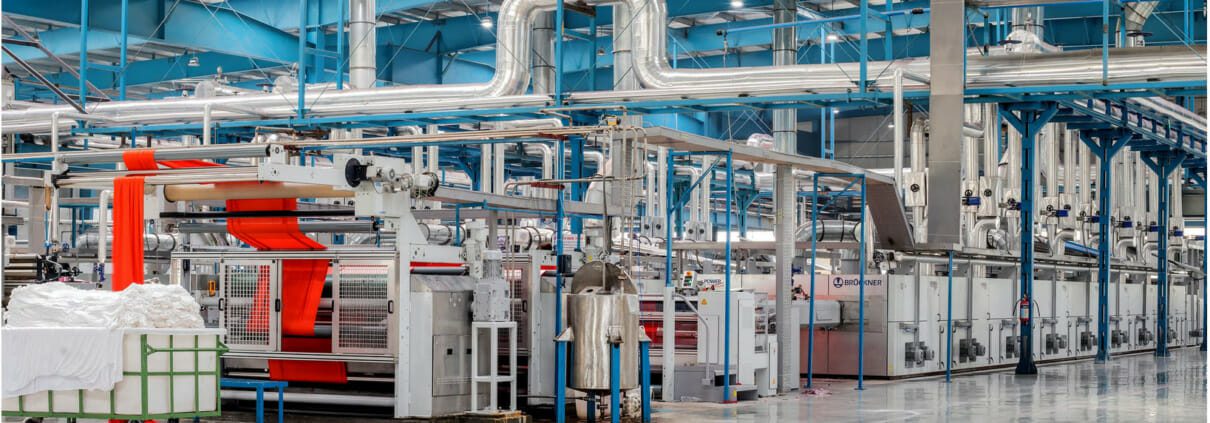How Today’s Manufacturers Are Leveraging Mobile Apps
The fourth industrial revolution or Industry 4.0 has transformed the otherwise legacy, archaic manufacturing environment. Today, mobile app development in manufacturing is making things easier, especially with the uptake of mobile technologies and faster internet infiltration rates.
The fact that consumers, markets, and supply chains are all connected using digital networks means that mobile apps will continue to be a priority in the manufacturing sector. Today, more than ever, the manufacturing sector is experiencing the benefits of mobile apps in driving productivity and optimization. In addition, mobile apps have reduced operating costs, improved efficiency, and enabled better field service.
Indeed, compared to other sectors, enterprise mobility is gradually becoming a top priority for manufacturing leaders. Regardless of the huge potential of Industry 4.0 to transform the traditional manufacturing set-up, few organizations are upscaling their efforts towards tech adoption.
Below we discuss how today’s manufacturing leaders are using mobile apps:
1. Integration with CRM software
Integrating your customer relationship management software with a mobile app helps you mobilize your interaction and communication with clients. This integration makes it possible to communicate with customers on the go. Communication is a major advantage since many manufacturing facilities and shop floors are large, and they require bikes and golf carts to navigate. Mobile apps promise new solutions and fresh capabilities in integrating with CRM software for streamlined communication.
2. Order fulfillment through real-time inventory
For time immemorial, manufacturers and shop floor workers have used hand-held devices to manage inventory. But today, tablet and smartphone technology let users, especially manufacturing leaders, use a single device to manage inventory, perform order fulfillment, send emails and attend virtual meetings.
The use of a single device for multiple tasks helps save on hardware and software costs. The real-time inventory and order fulfillment mobile app lets your procurement teams perform their tasks while automatically updating the database. In addition, it allows for order tracking capabilities and website updates.
3. Energy efficiency
One of the uses for low-code manufacturing is monitoring. In manufacturing, energy usage is a critical expenditure that affects time, resources, and throughput. Leveraging mobile apps is mostly used by manufacturers who are concerned with their energy consumption. These companies use these apps for the following purposes:
- Monitoring regular energy consumption
- Monitoring energy utilization
- Plant, asset, and line analysis
- Data collection and meter inspection
So, mobile apps are helping manufacturing leaders monitor their utilities.
4. Quality management
Industry 4.0 has ushered in exciting developments in manufacturing and beyond. For instance, low-code QMS apps manage quality in production floors. Low-code platforms and applications have unique flexibility. Low-code platforms help to incorporate tasks that are required to remain compliant with the changing laws.
In addition, QMS low-code applications can be integrated into content management systems. This integration helps track workflows and find documents for internal inspections and external audits. Thus, mobile apps are changing the face of manufacturing by helping manufacturing leaders track down their workflows and identify documentation for internal audits.
5. Production monitoring and management
Imagine you can program your manufacturing line or plant using a remotely located tablet or computer. With Industry 4.0, that’s possible. Manufacturing leaders must work with trusted partners to design automated workflows. New developments in machine metrics have shaped production shop floors, helping organizations leverage programmed instructions to control complex machine parts.
For instance, in computer numerical control CNC, programmed instructions run machine parts using the MTConnect language protocol. On the same note, mobile apps are being used to monitor manufacturing shop floors.
Indeed, if you’re meeting with a client to review and approve a manufacturing project, you can enter your product(s) specs and print-ready documentation and files on your device. Once you key in, the system beams the entered data to your IoT-enabled manufacturing equipment. By keying in this data, the manufacturing project can even be completed before you arrive at the manufacturing headquarters.
6. Real-time machine monitoring
Your manufacturing facility performance and productivity can be affected by a slight downtime. Therefore, your technicians must be quickly alerted when a piece of machinery or equipment goes down. In addition, mobile apps give you the ability to optimize the sensors you’ve installed as part of your IoT interface. By installing sensors and collecting insight and feedback using mobile apps, you can identify machines that require maintenance and repairs.
7. Increasing visibility
One way to increase the productivity of your shop floor workers is to obtain accurate information about their day-to-day activities. GPS technology enables manufacturing leaders to find employees and workers wherever they’re on the shop floor. Most importantly, you can ensure whether safety personnel are available in the manufacturing environment. The GPS technology further provides a detailed and accurate account of your inventory, enabling you to track product usage.
8. Equipment inspection
Ensuring that all your machines are inspected and checked is a sure-fire way of avoiding costly repairs and damages. It has become an issue that most manufacturers are investing in predictive maintenance. Predictive maintenance essentially uses condition-monitoring tools and sensors to observe and report on the nature and structure of a piece of equipment during its operation. Equipment inspection is becoming a reality with advanced monitoring tools that provide real-time reporting.
9. Employee productivity
Mobile apps make it easier for manufacturing shop floor leaders to monitor employee behavior and make modifications as needed. By using an app, you can track all employee movements and behavior and evaluate whether the employee’s conduct conforms to the company’s policy. Managers have remote, real-time access to everything, which is beneficial for occupational safety during plant emergencies. These statistics provide insight into how much time was spent on a single task and how many jobs were closed.
10. Resource utilization
By using mobile apps, managers can see everything going in and around the plant. Manufacturers have real-time access to sitting and moving inventory. This means that they can evaluate resource utilization and therefore make informed ordering decisions. In addition, better insight improves resource utilization. Managers can reconcile product orders and supplies and resource consumption or utilization.
11. Decision-making
Mobile apps offer faster, real-time access to accurate and reliable data. Faster access to verified information means that decisions can be made faster to improve the overall manufacturing process. And because mobile apps are easy and faster to use, they can improve the decision-making process. It’s important to note that utilizing customized mobile apps for manufacturing requires an initial investment. However, you must look at the long-term return on investment. Mobile apps foster efficiency and productivity, leading to creativity, innovation, and faster turnovers.
12. Automation
Automation streamlines workflows, especially in contemporary manufacturing environments. Automation software provides time and cost savings, eliminating human errors and improving overall productivity. Automation is becoming a critical element of the modern supply chain. Indeed, manufacturers are using low-code technology to automate process workflows and improve overall productivity gains.
The growth of modern manufacturing platforms has been facilitated by the rise of IoT technology like smart devices and interconnected networks. This automatically means more data streams in contemporary workplaces courtesy of interconnected IoTs. And to effectively tap into this data, low-code is being used to channel data and automate workflows to a central data repository. The repository is an enterprise resource planning system to perform data analysis and obtain actionable insights.
NS808 – Propelling Manufacturing Towards Digital Transformation
Manufacturers are endorsing digital transformation. For instance, 80% of manufacturers said they were ready to invest in new technology to improve their productivity gains. In addition, 91% of manufacturing leaders believe that data from people and machines will reduce costs and improve decision-making. And finally, 20% of manufacturers don’t share data either internally or externally, creating siloed manufacturing floors. Manufacturers must optimize mobile apps to streamline workflows and improve efficiency and productivity.
Contact NS804 to leverage mobile apps on your manufacturing shop floor.

 https://unsplash.com/photos/HpPmiduLDC0
https://unsplash.com/photos/HpPmiduLDC0






 https://unsplash.com/photos/SYTO3xs06fU
https://unsplash.com/photos/SYTO3xs06fU 


Leave a Reply
Want to join the discussion?Feel free to contribute!